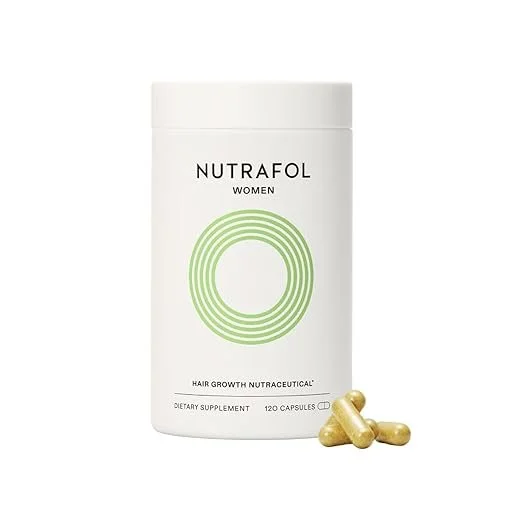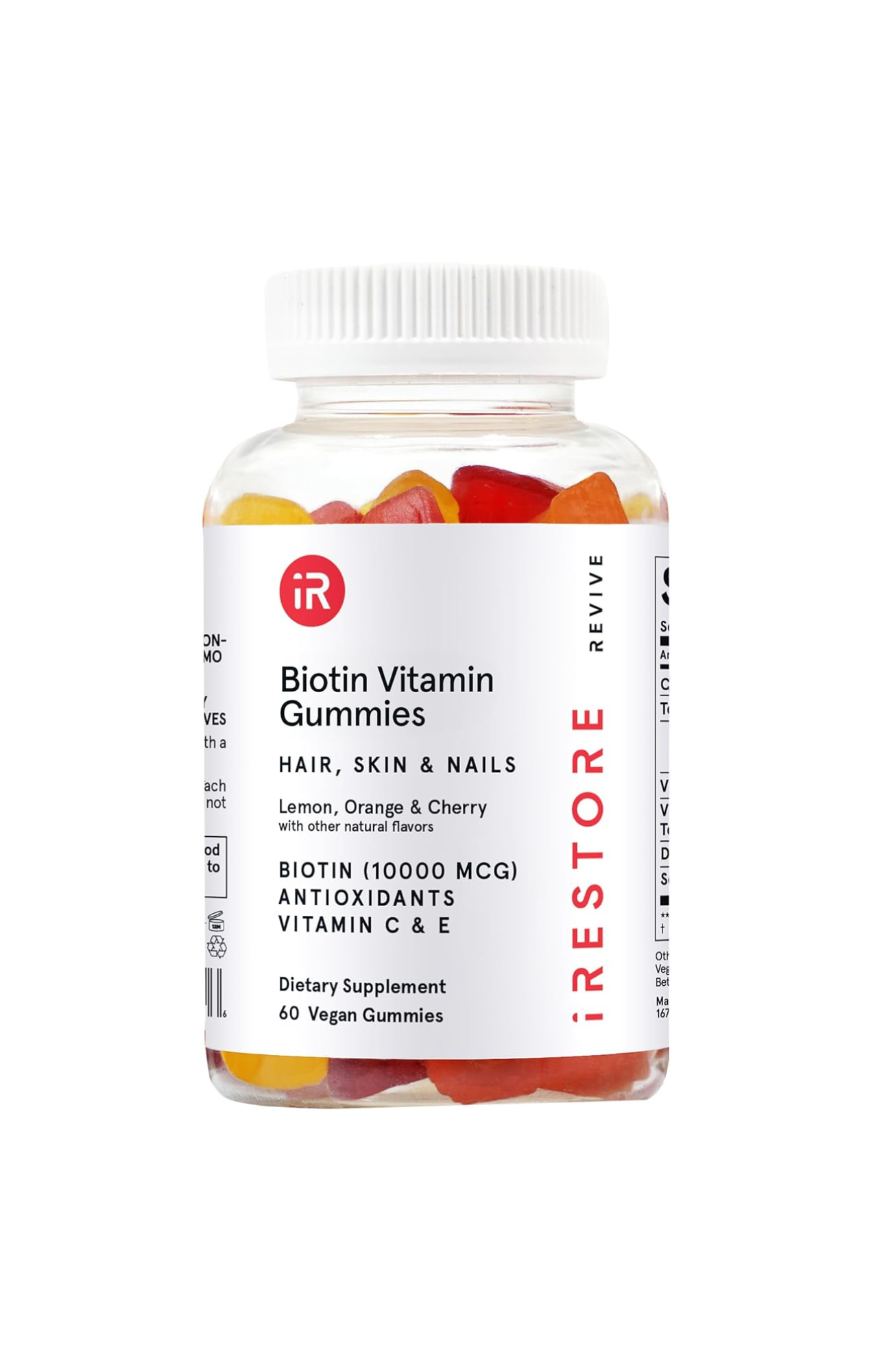Hair Loss After 40: The Truths Every Woman Should Know
Turning 40 is a milestone that brings wisdom, confidence, and, for many women, unexpected changes in their hair. If you've noticed more strands in your brush or a widening part, you're not alone. Hair loss after 40 is a common concern, but understanding the causes and solutions can empower you to take control.(American Academy of Dermatology)
I suspected I was losing my hair, but my hair is thick and the hair loss was subtle - at first! It wasn’t until my hair started coming out in handfuls in the shower that I reached out to my doctor for help. My grandmother had thick luscious hair when she was young and then by her 60’s her hair was thin and barely there. Yeah, that’s definitely not my jam - I love my hair and am determined to keep it as thick and healthy as possible. Considering this, I started taking Minoxidil once a day at age 50 and within a few weeks my hair was growing back, mostly just on top of my head, and a little on my chin (worth it!), temple bald spots were improving, and now I’m feeling pretty confident that I won’t be bald by 60. Phew!
If this sounds at all familiar then keep reading - trust me, hair loss treatments definitely help.
This post may contain affiliate links. I will be compensated if you make a purchase after clicking on the links but at no additional cost to you. Thank you for continuing to support LaChaCha!
Understanding Hair Loss After 40
The Hair Growth Cycle
Hair growth occurs in cycles: anagen (growth), catagen (transition), telogen (resting), and exogen (shedding). As we age, these cycles can become disrupted, leading to increased hair shedding and slower regrowth.(Time)
Common Causes
Hormonal Changes: Menopause and perimenopause can lead to decreased estrogen levels, affecting hair density and growth.
Genetics: Female pattern hair loss, or androgenetic alopecia, is hereditary and can become more apparent after 40.
Nutritional Deficiencies: Lack of essential nutrients like iron, vitamin D, and protein can contribute to hair thinning.
Stress: Emotional and physical stress can trigger telogen effluvium, a condition causing temporary hair loss.(LaserCap)
Medical Conditions: Thyroid disorders, autoimmune diseases, and certain medications can impact hair health.
Identifying the Signs
Catching hair loss early can make a real difference—especially during perimenopause and menopause, when hormonal shifts can sneak up on your strands. Knowing what to look for allows you to take action before it progresses. Here are some of the most common early indicators:
🪮 More Hair in Your Brush or Shower Drain
We naturally lose 50–100 hairs a day, but if you’re noticing significantly more shedding—on your pillow, in the shower, or in your hairbrush—it could be a sign that your hair’s growth cycle is out of balance.🌪️ A Widening Part or Thinning at the Crown
According to the American Academy of Dermatology, one of the most common patterns in women’s hair loss is a gradually widening part line or noticeable thinning at the top of the head. It may be subtle at first—like needing more product to hide scalp exposure—but it’s worth tracking.📉 Overall Reduction in Volume
Your ponytail feels thinner. Your hair lays flatter. You may not see bald patches, but the texture and density just aren’t what they used to be. A general drop in fullness is often one of the first red flags of midlife hair thinning.⚖️ Changes in Hair Texture
Hair may become finer, more brittle, or less responsive to styling tools and products. If your once-bouncy curls go limp, or your thick strands start feeling delicate and dry, your hair follicles may be shrinking or slowing production.
Effective Treatments
When it comes to addressing midlife hair loss, the most successful approaches are often a combination of treatments tailored to your unique needs. From medical interventions to high-tech therapies, here’s a breakdown of evidence-based options that may support regrowth and reduce further thinning:
Topical Solutions
Minoxidil (Rogaine): This FDA-approved over-the-counter treatment is one of the most well-known options for stimulating hair growth. Applied directly to the scalp, minoxidil works by extending the growth phase of the hair cycle and increasing blood flow to hair follicles. Results can take several months and consistency is key.
Oral Medications
Spironolactone: Originally developed as a diuretic, spironolactone has shown promise in treating female pattern hair loss, especially when related to hormonal imbalance. It works by blocking androgen receptors, which can help reduce the impact of androgens (like DHT) that contribute to hair thinning in women.
Always consult a healthcare provider before starting hormone-related treatments.
Nutritional Supplements
Deficiencies in certain vitamins and minerals can contribute to hair loss or prevent healthy regrowth. Key nutrients to support hair health include:
Biotin – supports keratin production
Iron – essential for oxygen delivery to hair follicles
Vitamin D – plays a role in the hair growth cycle
Zinc, collagen, and omega-3s may also support scalp and follicle health
(Source: Marie Claire)
Advanced Therapies
Platelet-Rich Fibrin (PRF): An innovative regenerative treatment, PRF uses your own blood to isolate platelets and growth factors, which are then injected into the scalp. Unlike PRP, PRF contains more healing components and no additives, and it releases growth factors more slowly for sustained stimulation of hair follicles. It’s an increasingly popular option for women looking for a natural, non-surgical boost in hair density.
Low-Level Laser Therapy (LLLT): This painless, non-invasive treatment uses red light or near-infrared light to stimulate cellular activity in the scalp, improving blood flow and encouraging follicles to enter the growth phase. It's available in-clinic or through FDA-cleared at-home devices like laser combs or caps.
Lifestyle Adjustments
While some hair loss is out of our control, small daily changes can make a big difference. Supporting your hair from the inside out starts with your overall lifestyle—and midlife is the perfect time to reset those habits.
🥗 Balanced Diet
What you eat matters. Aim to include foods rich in protein (like eggs, beans, and lean meats), as well as hair-loving nutrients like iron, zinc, biotin, and vitamins A, C, D, and E. Think leafy greens, sweet potatoes, nuts, salmon, and berries. Hydration also plays a key role in maintaining scalp health.
🧘♀️ Stress Management
Chronic stress can trigger or accelerate hair loss, especially during hormonal shifts. Practices like mindfulness, yoga, walking outdoors, or even five minutes of deep breathing each day can help regulate cortisol levels and support healthy hair growth from within.
💁♀️ Gentle Hair Care
How you treat your hair matters, too. Avoid excessive heat styling, tight hairstyles, and harsh chemical treatments that can damage already fragile strands. Swap in sulfate-free shampoos, use a wide-tooth comb on wet hair, and consider sleeping on a silk pillowcase to reduce breakage.
When to Consult a Professional
If you’re noticing significant hair loss—more shedding than usual, bald patches, or thinning you can’t explain—it’s time to book an appointment with a dermatologist or certified trichologist. These specialists can assess the root cause (literally) through scalp analysis, blood work, or hormone panels, and help you determine whether your hair loss is related to stress, hormones, nutritional deficiencies, or an underlying condition.
Rather than guessing or self-treating, a medical consultation ensures you get a clear diagnosis and a treatment plan tailored to your specific needs. Options might include topical solutions, prescription medications, laser therapy, or lifestyle interventions. And the sooner you seek help, the better your chances of preventing further loss and restoring hair health.
(Source: The Guardian)



